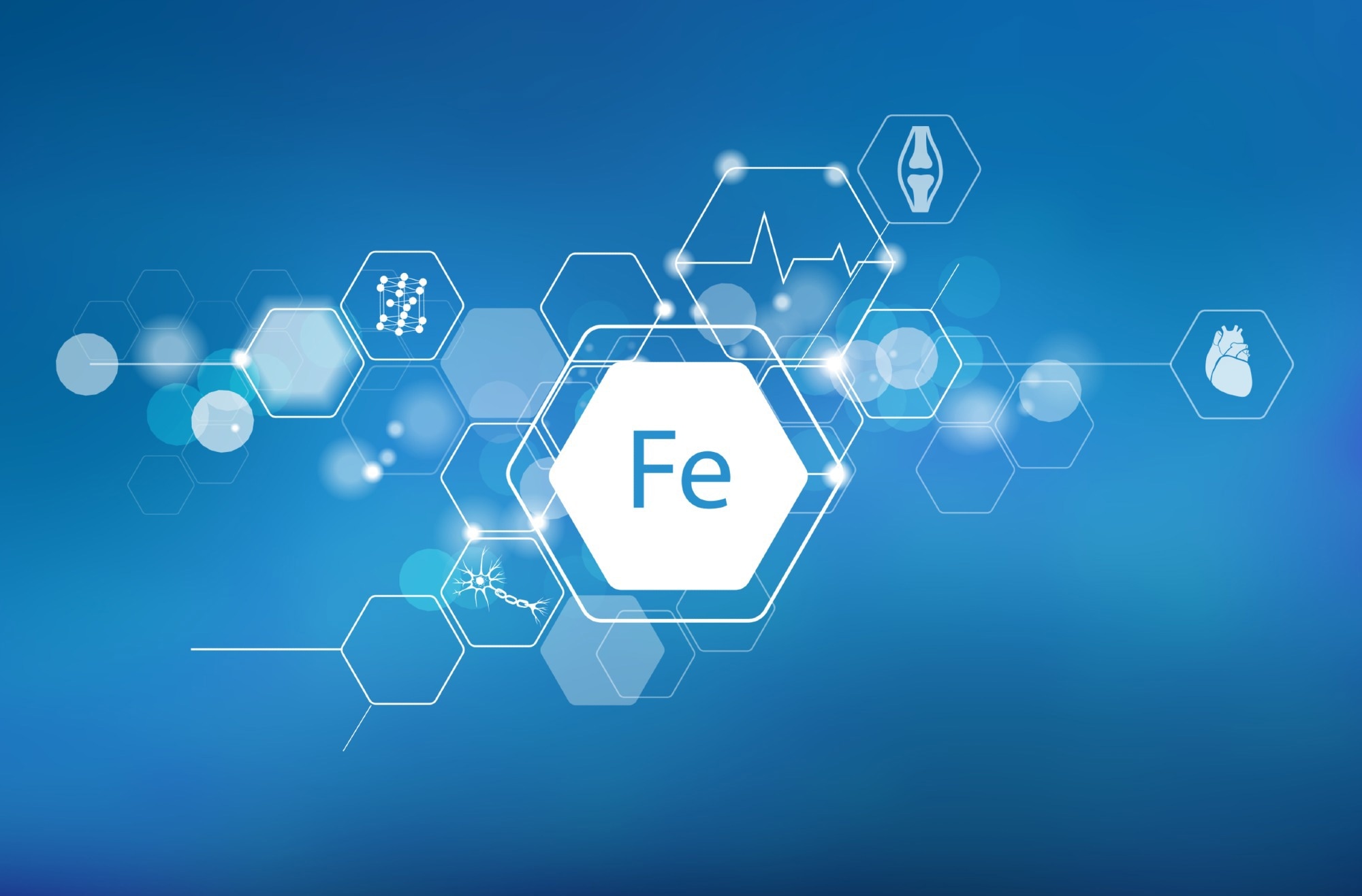
[ad_1]
In a current examine revealed in Nature Metabolism, researchers investigated the affiliation between mobile harm, iron buildup, senescence, and fibrosis.

Background
Fibrogenesis is a defensive response to tissue harm that leads to life-threatening problems. Senescent cells, also referred to as the senescent-associated secretory phenotype (SASP), are the first reason for fibrosis. Fibrosis causes organ harm and the event of cardiovascular, interstitial lung, and renal problems by changing wholesome tissues with collagen-rich scar tissue. Profibrogenic components comparable to tumor progress issue beta (TGF-β) and interleukin-11 (IL-11) might trigger senescent cells to develop into fibrogenic.
Concerning the examine
Within the current examine, researchers recognized iron accumulation as a therapeutically exploitable reason for pathological senescence and fibrosis.
The examine investigated the operate of iron buildup in fibrotic tissues, particularly in mice with lung fibrosis and folks with idiopathic pulmonary fibrosis (IPF). Perl’s Prussian blue staining was used to look at mouse kidneys and kidney samples from diabetic kidney illness sufferers. In addition they investigated the gene signatures of iron transporter and storage genes within the lung transcriptomes of wholesome people and IPF sufferers. The crew examined iron kinetics throughout fibrogenesis in tissues obtained from acute respiratory misery syndrome (ARDS) sufferers.
Mice had been administered intratracheal bleomycin or intraperitoneal (i.p.) folic acid (FA) to evaluate the influence of iron buildup in injured tissues. In addition they investigated whether or not iron buildup was a bystander impact or a causal think about fibrogenesis.
The researchers moreover examined whether or not intratracheal iron might trigger senescence since vascular or hemolytic accidents can launch iron from broken purple blood cells (RBCs), contributing to irritation, senescence, and fibrosis. They developed a mouse mannequin (Tie2-Cre-ERT2; Rosa26-iDTR) by which tamoxifen and diphtheria toxin injections might ablate a proportion of endothelium cells, leading to microhemorrhages, primarily within the lungs, permitting animal survival.
To analyze the operate of iron in FA-induced renal fibrosis, the researchers administered FA to mice within the presence or absence of the iron chelator deferiprone (DP). They investigated the consequences of iron on in vitro-grown cells to enhance mechanistic understanding of the connection between iron and getting older. As well as, the researchers assessed injury-stimulated iron launch and accumulation in vitro.
The crew used single-cell ribonucleic acid sequencing (scRNA-seq) of murine lungs two and 6 days after iron publicity to enhance understanding of the mobile varieties underpinning these two phases of iron response. In addition they examined a scRNA-seq meta-analysis of IPF sufferers for the enrichment of the interstitial fibrosis and tubular atrophy (IFTA rating) and a Magnetic resonance imaging (MRI) examine of 13 renal allograft recipients for the R2* sign within the kidney cortex and the fibrosis stage evaluated on biopsies.
Outcomes
Iron buildup was related to cell senescence and totally different fibrotic problems in murine animals and people. Hemolytic and vascular harm could cause iron deposition, inducing senescence and selling fibrosis. Even after the extracellular iron upsurge had subsided, senescent cells continued to gather iron.
Cells subjected to varied senescence-eliciting insults accrued extreme ferritin-bound types of iron, predominantly inside lysosomes with labile iron in giant portions, which fed the formation of SASP and reactive oxygen species (ROS). Iron detection by MRI might allow non-invasive analysis of fibrotic load within the renal tissues of people and mice with fibrosis.
The snRNA sequencing evaluation findings revealed that iron stimulated transient neutrophil recruitment, persistent monocyte, macrophage, and dendritic mobile progress, and the gradual suppression of the comparatively ample bronchial artery cells. The intratracheal iron injection was ample to induce the hallmarks of fibrogenesis, together with collagen deposition, senescence, vascular rarefaction, irritation, and innate immune infiltration.
The crew famous Iron buildup in murine fibrotic cardiac tissues with transgenic adrenoceptor beta 1 (Adrb1) overexpression or ischemic cardiac illness ensuing from coronary arterial ligation. Comparable findings had been obtained in murine renal fibrosis attributable to an i.p. FA injection or ureteral blockage on one facet. IPF sufferers revealed a big enhancement of the iron transport signature in each datasets, demonstrating that modified gene expression of iron absorption and storage genes is a distinguishing hallmark of IPF.
The researchers discovered a transitory rise within the variety of fibroblasts and goblet cells within the non-immune compartment, with probably the most notable alterations being the stimulation of plasminogen activator molecules, tissue inhibitor of metalloproteinase 1 (TIMP1), and the repression of angiogenic molecules, vascular endothelial progress issue A (VEGF A) and angiopoietin 1 (Angpt1). IPF lung tissues had been enriched for iron accumulation signature (IAS) genes in bulk lung tissue and quite a few cell varieties.
The examine findings confirmed that iron buildup contributes to senescence and fibrosis, and iron metabolism could also be a therapeutic goal for senescence-related problems. Iron buildup in fibrosis happens early after tissue harm and evolves as a distinguishing hallmark of sure fibrotic illnesses. Iron extra can set off fibrogenesis and senescence.
The researchers distinguished between ‘extreme extracellular iron’ as a putative senescence set off and ‘extreme intracellular iron’ as a driver of senescent cell pathogenic penalties.
[ad_2]